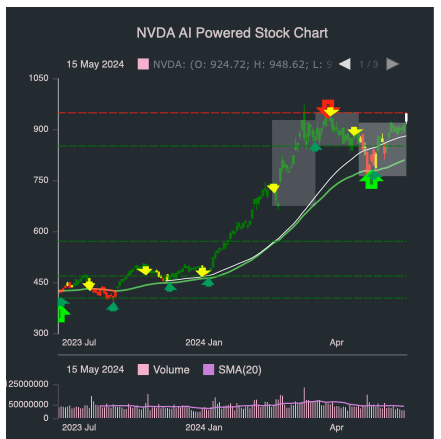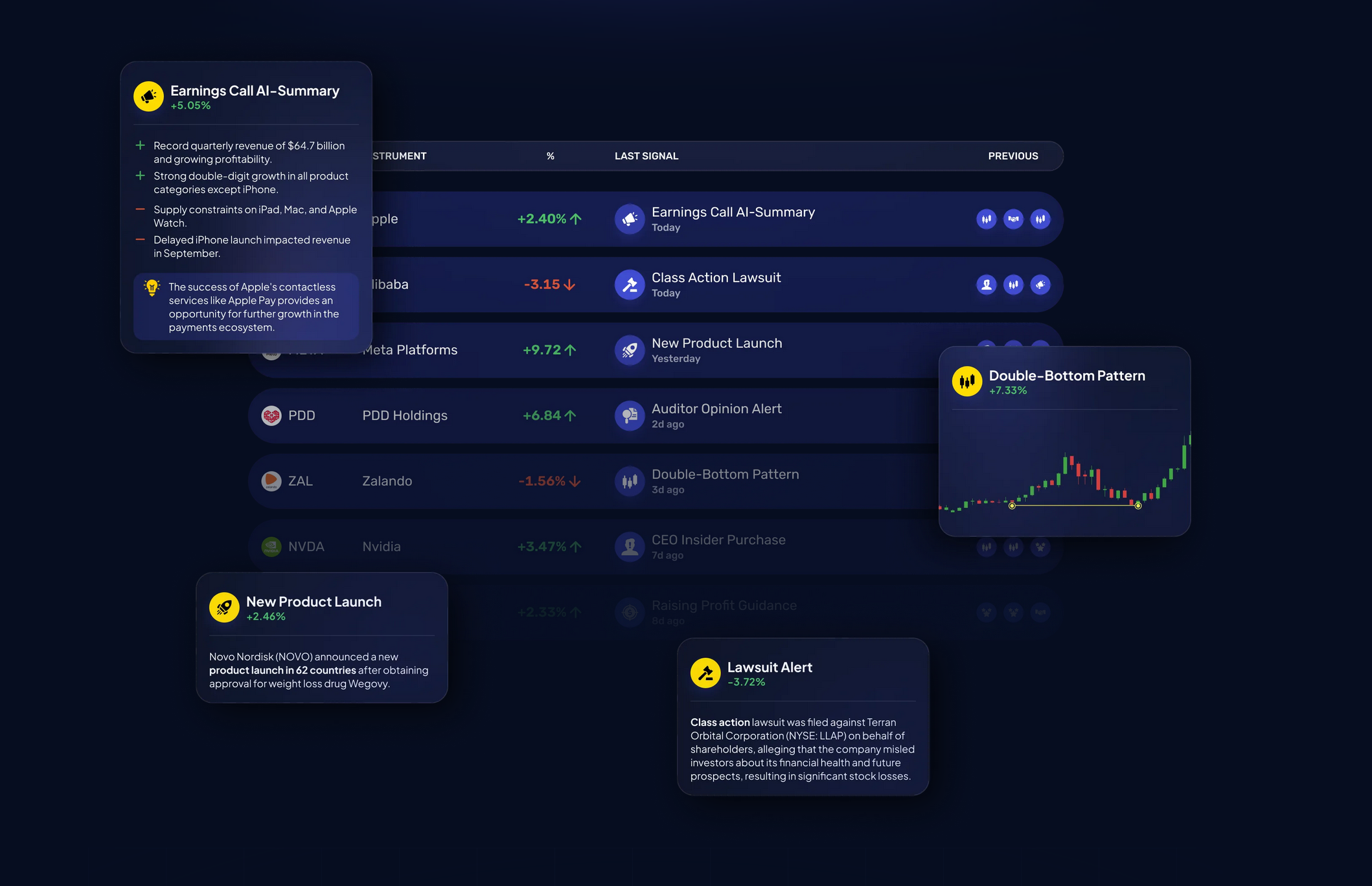20 Pro Suggestions For Selecting AI Stock Trading Platform Websites
20 Pro Suggestions For Selecting AI Stock Trading Platform Websites
Blog Article
Top 10 Ways To Evaluate The Market Coverage Offered By Ai Trading Platforms, Which Predict Or Analyze The Performance Of Stocks.
Market coverage is an essential element to take into consideration when evaluating AI trading platforms for stock prediction or analysis in that it defines the range and depth of markets and assets that you are able to access. If you choose a platform with broad coverage, you can diversify your portfolio and make the most of global opportunities. You can also adapt to different trading methods. Here are 10 top tips to help you evaluate the market coverage provided by these platforms.
1. Evaluate Supported Asset Classes
Stocks - Make sure the platform is able to cover major stock markets (e.g. NYSE NASDAQ LSE HKEX), and also includes small-caps, mid-caps and large-caps.
ETFs: Make sure that the platform offers an array of ETFs that provide diversified exposure across topics, sectors, and regions.
Futures and options: Check whether the platform supports derivatives like options, futures and other instruments that leverage.
Commodities and Forex. Check if the platform offers forex pairs as well as base and precious metals, energy-related products, and agricultural products.
Cryptocurrencies Check whether the platform supports popular cryptocurrencies like Bitcoin, Ethereum, and altcoins.
2. Check the coverage area
Global markets - Ensure that the platform can to provide coverage of all major markets around the globe which includes North America (including copyright), Europe, Asia-Pacific markets as well as emerging ones.
Regional focus: Check whether the platform is focused on particular markets or regions that match your trading preferences.
Local exchanges. Check whether the platform supports exchanges that are regional or local for your area.
3. Compare real-time data with delayed Data Delayed Data
Real-time data - Ensure that the platform offers real-time market information to aid you in making quick decisions, particularly for active traders.
Delayed Data: Check whether the data that is delayed can be obtained at no cost or at the cost of. These could be enough for long term investors.
Data latency: Check whether the platform is able to reduce data latency, especially for high-frequency trading.
4. Analyze historical data availability
The breadth and depth of historical data: Make sure that the platform has extensive historical data (e.g. for at minimum 10 years) to allow backtesting.
Check the granularity of data from the past.
Corporate actions - Verify historical data to ensure that it reflects stock splits or dividends, in addition to other corporate activities.
5. Make sure to check the market depth and place an order Books
Level 2 data: Make sure that the platform offers Level 2 information (order book depth) for improved price search and execution.
Bid-ask spreads: Check if the platform is displaying real-time bid spreads for precise pricing.
Volume data: Make sure that the platform has extensive volume data that can be used to analyze market and liquidity.
6. Review the coverage for Indices and Sectors
Major indices: Make sure that the platform contains the most important benchmarking indices that are used for index-based strategies, and other uses (e.g. S&P 500, NASDAQ 100, FTSE 100).
Data specific to a sector: For targeted analysis, make sure the platform has information on a specific industry (e.g. healthcare, technology or energy).
Custom indices. Make sure the platform is able to track or create custom indices that satisfy your criteria.
7. Evaluation of integration with Sentiment and News data
News feeds: Make sure that the platform is able to provide live feeds of news from reputable sources, such as Bloomberg and Reuters in the case of market-moving events.
Sentiment analysis: Find out whether there are tools to perform sentiment analysis that are based on social media posts, news articles, or other data sources.
Events-driven Strategies: Determine if the platform can support strategies that are driven by events (e.g. economic reports or earnings announcements).
8. Check for Multi-Market Capabilities for Trading
Cross-market Trading: Verify that the platform allows traders to trade across a variety of market segments and asset classes using an integrated interface.
Currency conversion Check to see if you can convert currencies automatically to international trades, and if there are accounts that support multi-currency transactions.
Support for time zones: Verify that your platform supports the ability to trade in multiple time zones.
9. Check the coverage of other data sources
Alternative data: Check if the platform integrates alternative sources of data (e.g. satellite imagery or web traffic, credit card transactions) for unique insight.
ESG data - Check that the platform is able to provide environmental, social, and governance data (ESG). This is important for the socially conscious investment.
Macroeconomic data - Ensure that the platform has macroeconomic data (e.g. GDP, inflation) to perform fundamental analysis.
Review customer feedback and market Reputation
User reviews: Read user feedback in order to assess the platform's market coverage as well as its reliability and usability.
Check for the platform's industry reputation. This includes awards and acknowledgement from experts in the field.
Case studies and testimonials They will showcase the performance of the platform in particular asset classes or markets.
Bonus Tips
Trial time: You may make use of the demo, trial, or free trial to test the market coverage and the quality of data.
API access: Determine if your platform's API is able to access market data programmatically to perform custom analyses.
Customer Support: Ensure that the platform can offer support for any issues related to data or market issues.
By following these tips and techniques, you will be able to assess the market coverage of AI trading platforms that predict or analyze stocks Be sure to select the one that gives you access to the markets and information necessary to be successful in trading. Comprehensive market coverage enables you to diversify your portfolio, explore new opportunities, and adapt to the changing market conditions. Have a look at the recommended ai investment app for blog info including ai investment app, ai stocks, stock ai, ai investment platform, ai investment app, ai stock market, ai stock, ai chart analysis, ai for investing, ai stocks and more.
Top 10 Ways To Evaluate The Regulatory Compliance Of Ai Stock Analysis And Prediction Platform
Compliance with regulatory requirements is an essential aspect to consider when evaluating AI platform for analyzing and predicting stocks. Compliance ensures a platform's operation within legal guidelines. The data of the users is secure and financial regulations are adhered to, which reduces any risk of legal concerns. Here are top 10 tips on how to evaluate the level of compliance these platforms have.
1. Verify licensing and registration
Regulatory authorities: Check that the platform's license and registration is with the relevant financial regulatory authorities (e.g. SEC or FCA in the United States, ASIC or ASIC in Australia).
Broker partnerships: If the platform is integrated with brokers, ensure that brokers are properly licensed and regulated.
Public records: Visit the website of the regulator to check on the status of registration, as well as previous violations.
2. Compliance with the Data Privacy Evaluation
GDPR: When operating in the EU or offering services to users there, the platform should comply with the General Data Protection Regulation.
CCPA for users living who reside in California, verify that they are in compliance to the California Consumer Privacy Act (CCPA).
Policies on handling data: Review the policy on data privacy of the platform to determine how user data is collected and stored. It also outlines how data is shared.
3. Evaluation of Anti-Money Laundering Measures
AML Policies The platform must have robust AML (Anti-Money Laundering) policies to detect money laundering and prevent it from happening.
KYC procedures: Check whether the platform is following Know Your Customer (KYC) procedures for verifying the identities of users.
Check the platform's transaction monitoring. Does it track transactions and report any suspicious activity to the authorities?
4. Make sure that you are in compliance to Trading Regulations
Market manipulation: Be sure that the platform has safeguards put in place to protect against market manipulation, including the spoofing of trading or wash trading.
Order types: Confirm that the platform complies with the regulations for order types (e.g. there is no illegal stop-loss hunting).
Best execution: Examine to see if the platform is adhering to the best execution method which guarantees that trades will be executed at the lowest price.
5. Assess the level of Cybersecurity Compliance
Data encryption. Your platform should use encryption of user data both during transit and in rest.
Incident response. Verify whether the platform has a strategy of action to handle cyberattacks and data breaches.
Verify any certifications.
6. Evaluate Transparency and Transparency
Fee disclosure: Ensure the platform clearly discloses the total amount of fees, which includes hidden or additional charges.
Risk disclosure - Make sure that the platform provides clear risk disclosures. This is particularly important for trading strategies that have high leverage or risks.
Performance reporting: Determine whether the platform offers clear and accurate reports on performance for its AI models.
7. Check for the conformity to International Regulations
Cross-border trading: If you trade internationally, make sure your platform is compliant with the regulations in all relevant jurisdictions.
Tax reporting: Verify whether the platform has tools or reports that assist users in complying with tax laws (e.g., FIFO rules in the U.S.).
Conformity with sanctions: Ensure whether the platform is in compliance with international sanctions and does not permit trading with countries or entities that are banned.
8. Assess record-keeping and audit trails
Transaction records: Make sure the platform maintains complete records of each transaction for regulatory and audit purposes.
Logs of user activity (logs): Check to check if the platform records user activity such as transactions and logins. Also, check if the account settings have changed.
Audit readiness: Make sure the platform is equipped with all the logs and documentation required for a regulatory review.
9. Evaluation of Compliance AI Specific Regulations
Algorithmic trading rules: If you are using a platform that supports algorithmic trading ensure that it is compliant with the relevant regulatory frameworks such as MiFID II or Reg SCI, in Europe and the U.S.
Fairness and bias: Determine whether the platform is able to monitor and mitigates biases in its AI models to ensure fair and ethical trading.
Explainability: As required by certain regulations, the AI platform must provide clear explanations of AI-driven decisions and predictions.
10. Review feedback from users and regulatory history
Reviews from users: Perform user studies to determine the reputation of the platform regarding legal conformance.
Check the history of regulatory compliance to determine whether there have been any violations to the rules of regulation that were committed, and also fines and penalties.
Third-party checks: Ensure that the platform is in compliance with regulations by checking whether it has regular audits from third parties.
Bonus Tips
Legal consultation: Talk to a legal expert about the compliance of the platform with relevant regulations.
Trial period: Make use of a no-cost demo or trial to assess compliance features on the platform.
Support for customers - Ensure that the platform is able to help with any compliance related questions or issues.
These guidelines will allow you to assess the compliance of AI trading platforms that predict/analyze price of stocks. In this way you'll be able choose a platform which works within the legal frameworks and protects your. Compliance does not just help minimize legal risks, it also increases trust in the platform. Follow the most popular read this for invest ai for website recommendations including best ai penny stocks, ai options, ai tools for trading, investing with ai, how to use ai for stock trading, ai options trading, can ai predict stock market, ai copyright signals, stock predictor, stock trading ai and more.